Analysis on the producing area and planting of Japanese wisteria in China
The largest scale of Japanese wisteria introduced into China was during the preparation of Jiading Wisteria Garden. There were 93 trees in the wisteria garden in Jiading, including more than 30 different varieties, all of which were provided free of charge by Mr. Fujimoto, the former mayor of Kazachi, Okayama Prefecture, Japan. Every year, Mr. Fujimoto Daosheng comes from Japan at his own expense to provide technical guidance on the cultivation and pruning of wisteria. The wisteria scaffolding in the park was donated by Mr. Deyong Shinji, president of the Japanese Deyong Carp and Fish Banner Company from Kazachi, Japan (donated 2 million yen in 1997). With the continuous expansion of market applications such as Japanese wisteria landscaping and potted plants, the planting base of Japanese wisteria adjusts the varieties and cultivation methods of wisteria accordingly. As wisteria takes a long time to grow and there is a certain risk of flower and tree transplantation, planting enterprises and bases will gradually adjust their size.
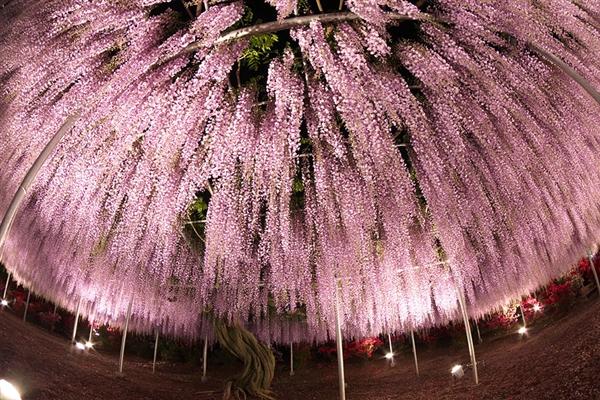
Analysis on the producing area and planting of Japanese wisteria in China
Japanese wisteria is native to Japan. The investigation and analysis report on the market prospect of wisteria in China and Japan released by Qianxun Consulting shows that the main planting areas in China are as follows The main cities in the middle subtropical evergreen and deciduous broad-leaved forest region in the Yangtze River basin and its south include: Wuhan, Shashi, Huangshi, Yichang, Nanchang, Jingdezhen, Jiujiang, Ji'an, Jinggang Mountain, Ganzhou, Shanghai, Changsha, Zhuzhou, Yueyang, Huaihua, Jishou, Changde, Xiangtan, Hengyang, Shaoyang, Guilin, Wenzhou, Jinhua, Ningbo, Chongqing, Chengdu, Dujiangyan, Mianyang, Neijiang, Leshan, Zigong, Panzhihua, Guiyang, Zunyi, Liupanshui, Anshun, Kunming, Dali The main cities in the south subtropical evergreen broad-leaved forest region include Fuzhou, Xiamen, Quanzhou, Zhangzhou, Guangzhou, Foshan, Shunde, Dongguan, Huizhou, Shantou, Taipei, Liuzhou, Guiping; the main cities in the tropical monsoon forest and rain forest region are: Haikou, Sanya, Qionghai, Kaohsiung, Tainan, Shenzhen, Zhanjiang, Zhongshan, Zhuhai, Macao, Hong Kong, Nanning, Qinzhou, Beihai, Maoming, Jinghong.
Wisteria is more suitable for the environment, but it is considered difficult to plant, because it takes an average of seven years to blossom, and if it starts with seeds, it is more likely to take ten years. Wisteria is a plant in area 4-9, which is rare to adapt to both temperate and cold climates, but in cold regions, it must be planted in the south with more light, and the roots should be covered with soil in winter. Wisteria mostly blossoms in June and some as late as the end of summer. In order to control the shape of the tree and maintain its beauty after flowering, it must be pruned.
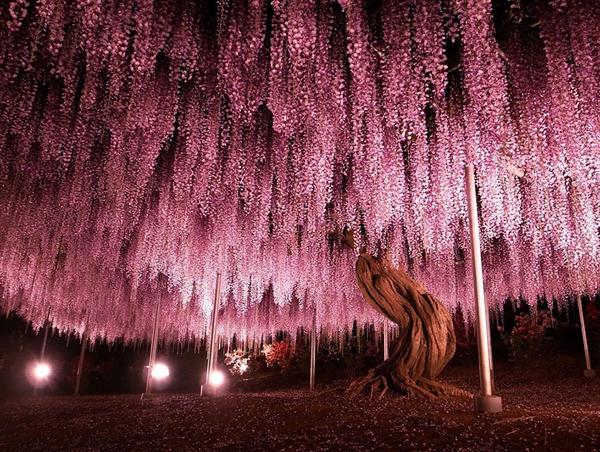
Analysis on the producing area and planting of Japanese wisteria in China
Wisteria is harvested after autumn, peeled off the pods, dried and stored in the sun, or stored in wet sand. The seeds were soaked in warm water of 60 ℃ for 1-2 days in spring. When the water temperature dropped to 30 ℃, the seeds were expanded and fished out, washed in cold water and stored in moisturizing for one day and night. Seedlings emerge in about 1 month, and the emergence rate is about 90%. Because the plant is not resistant to transplant, the row spacing of the plant should be slightly larger when sowing, and move directly to the planting place after 2-3 years.
Cuttings propagation, generally using hardwood cuttings, autumn to take I-2-year-old stout branches, bundle buried to the next year. Before the branches sprouted in the middle and late May, the cuttings were cut into about 15cm as cuttings, and the cuttings were inserted into the prepared bed seedlings with a depth of about 2 to 3 of the length of cuttings. Spray water in time and strengthen maintenance. Keep the seedbed moist and the annual plant island reaches 20-50cm. He came out of the nursery two years later.
Root cuttings propagate, because the root system of wisteria is very easy to produce adventitious buds. Therefore, the thick root system of 0.5-2.0cm can be excavated in the middle and last ten days of March, cut into 10-12cm cuttings, inserted into the seedbed, and keep the upper incision parallel to the ground.
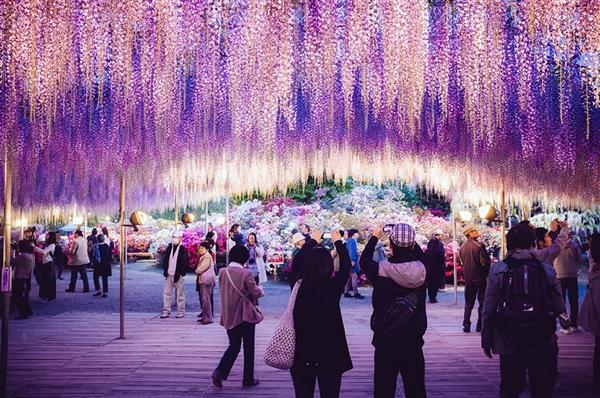
Analysis on the producing area and planting of Japanese wisteria in China
Grafting propagation, wisteria with good characters can be propagated by grafting. Select the good variety of wisteria as scion and the common variety as rootstock. Grafting is usually carried out before the sprouting of plants in spring, either by branch grafting or root grafting. Some varieties of Japanese wisteria are generally propagated mainly by grafting to achieve large-scale production.
Cultivation and maintenance. Wisteria is required to avoid harming the root system because of its long main root and few whisker roots. the survival rate of transplantation is relatively high in spring and autumn, and there can be no soil mass when transplanting. More than planting in early spring, planting holes were applied organic fertilizer as base fertilizer, and watered after planting. Wisteria should be scaffolded before planting, and thicker branches should be tied to the rack so that it can climb along the frame. Because the growth period of wisteria is relatively long. the branches and leaves are luxuriant, so a relatively solid grid can be made according to the design requirements before planting or before climbing.
Pruning wisteria is usually pruned during dormancy. The distribution of branches can be adjusted by densification and human traction. In order to promote the growth and development, the bentgrass should be trimmed reasonably according to the growth characteristics of wisteria, and the new branches of the same year should be called shrinking. Cut off 1 big 3-1 big 2, and remove the base of thin and weak branches and withered branches. The post-anthesis pruning machine adopts strong pruning of the first-year branches and erasing too many sprouts to appropriately reduce the height and ensure the shrub shape and the growth of a sufficient number of strong branches in the same year.

Analysis on the producing area and planting of Japanese wisteria in China
Before wisteria sprouted, nitrogen, phosphorus and potassium mixed fertilizer was applied every half a month, and phosphorus and potassium fertilizer was applied again before flowering. Don't use too much nitrogen fertilizer, otherwise the plant will grow and not blossom. Prune in time after flowering, cut off pedicels, and apply helium-based mixed fertilizer once. Base fertilizer was applied around the stem of wisteria in autumn. It is better to apply organic fertilizer and water it after application.
In Japan, wisteria varieties were collected, identified, improved and bred earlier, and there were many varieties. There is little work in this area in China. With the wide application of plant tissue culture and rapid propagation and virus-free technology in the breeding of excellent seedlings in modern agriculture, Japanese multi-flowered wisteria, as a kind of excellent color tree species for urban landscaping, has been in short supply in Shanghai and Jiangsu in recent years, and the price is high (5 yuan per seedling with high 30~50cm and 100 yuan per plant with 3-year-old 250cm).
The impact of the rising price of Japanese wisteria seedlings on the profitability of Japanese wisteria enterprises is restricted by the overall technical level of the industry, and the seedling price causes the cost of Japanese wisteria industry to rise, but with the process of industrialization and rapid production of Japanese wisteria species, it will not have too much impact on the Japanese wisteria industry.
- Prev
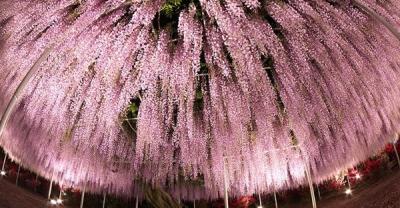
Planting method and Propagation of Flowers-- Air Pineapple
Before understanding how to grow and maintain air pineapple, we should first understand some basic situation of air pineapple, air pineapple, as its name implies, do not plant soil in flowerpots.
- Next
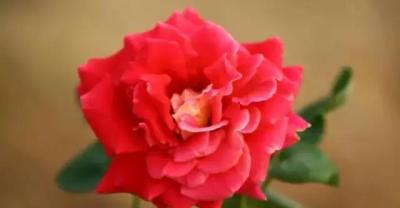
How to improve the yield and ensure the quality of balsam pear in anti-season greenhouse!
Balsam pear preface: balsam pear is a kind of vegetable with bitter taste but high nutritional value, which has its unique position in the vegetable market. As a grower's concern.
Related
- Fuxing push coffee new agricultural production and marketing class: lack of small-scale processing plants
- Jujube rice field leisure farm deep ploughing Yilan for five years to create a space for organic food and play
- Nongyu Farm-A trial of organic papaya for brave women with advanced technology
- Four points for attention in the prevention and control of diseases and insect pests of edible fungi
- How to add nutrient solution to Edible Fungi
- Is there any good way to control edible fungus mites?
- Open Inoculation Technology of Edible Fungi
- Is there any clever way to use fertilizer for edible fungus in winter?
- What agents are used to kill the pathogens of edible fungi in the mushroom shed?
- Rapid drying of Edible Fungi

